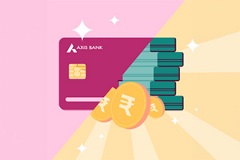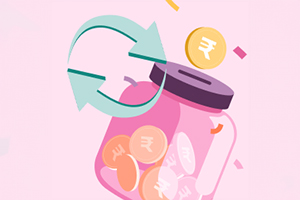Understanding the Credit Card interest rate is essential, whether you're new to Credit Cards or a long-time user. Expressed as the Annual Percentage Rate (APR), this rate determines how much you'll pay on outstanding balances if not cleared on time.
A higher rate means higher costs, making it crucial to know how to compare and manage rates effectively. Wisely choosing and using a Credit Card can minimise interest payments, save money, and make more informed financial decisions. Stay updated to avoid unnecessary charges and take control of your finances.
What are Credit Card interest rates?
Credit Card interest rate is a measure of the cost of borrowing money on a Credit Card. It is essentially the interest rate on the Credit Card balance that the Credit Card issuer charges to the cardholder
Credit Card interest rate, or APR (annual percentage rate), is an important factor to consider when choosing a Credit Card, as it will determine the amount of interest charged on any outstanding balances. Credit card interest rates are usually higher than the interest rates charged on other loans, such as mortgages and Car Loans.
Credit Cards are unsecured loans, meaning that the card issuer does not have a lien on your property if you fail to make payments. Thus, Credit Card companies charge higher interest rates to protect themselves from the risk of default.
How are Credit card interest rates calculated?
Credit card interest rate is typically expressed as a percentage. It is calculated by taking the total amount of interest you will be charged over a year, divided by the total amount of credit you have been extended. The APR may sometimes include other fees such as annual, balance transfer, and cash advance fees.
Also Read: 14 different types of Credit Card charges & fees
Factors that affect the Credit Card interest rates
Creditworthiness
Credit Card companies use a variety of factors to determine your creditworthiness, including credit history, income and other financial data. Credit Card companies use this information to evaluate your risk level and determine the APR they will offer.
Type of card
Some Credit Cards have a fixed APR, while others may have an introductory APR lower than the ongoing APR. Additionally, some Credit Cards may have a variable APR that can change over time. Choose from Axis Bank's wide range of Credit Cards and apply for the Credit Card that best suits your needs.
Interest rate
Credit Card companies will determine the interest rate they will charge based on your creditworthiness and the type of card you own.
Fees
Credit card companies may charge additional fees, such as an annual fee or a balance transfer fee. These fees can impact the overall cost of borrowing as the costs might increase.
Rewards
Some Credit Cards offer rewards for spending or for making timely payments. These rewards might result in an overall reduction in costs.
How is Credit Card interest rate calculated?
Credit Card interest rates are typically calculated using the Annual Percentage Rate (APR). However, the actual interest charged is based on your daily outstanding balance.
To calculate this, the APR is divided by 365 to determine the daily interest rate. The daily rate is applied to the balance you carry over each day. This means that if you don’t pay off your full balance by the due date, interest will be charged on a daily basis, and it compounds until the balance is cleared.
Let's say your Credit Card has an APR of 18%. Dividing the APR by 365 to get the daily interest rate: 18% ÷ 365 = 0.0493% per day.
If you have an outstanding balance of ₹10,000, the daily interest would be: ₹10,000 × 0.0493% = ₹4.93 per day.
If you carry this balance for 30 days without making any payments, the total interest would be: ₹4.93 × 30 = ₹147.90.
This shows how quickly interest can accumulate if the balance isn't paid off in full.
When is interest rate charged on Credit Cards?
Credit card interest is incurred when the full monthly bill isn't paid, with rates usually ranging from 35-40% annually. If you only pay the minimum amount, the remaining balance accumulates interest, and the minimum payment increases monthly. Interest accrues daily from the purchase date, not the end of the billing cycle. You can use Axis Bank's EMI calculator to get accurate results on your Credit Card interest rate.
What is Credit Card Interest-free Period?
The interest-free or grace period of a credit card spans from the transaction date to the payment due date, typically ranging from 18 to 55 days, depending on the issuer or type of credit card. During this period, no interest is applied on transaction amount if the cardholder settles the entire bill on or before the due date.
Type of transactions that attract interest charges
In addition to interest accrued on unpaid balances, credit card issuers often charge additional interest on cash withdrawals made through the credit card. When you use your credit card to withdraw cash, a cash advance fee is typically applied upfront, and interest begins accruing immediately. The interest rates for cash advances are often higher than those for regular purchases, and there is usually no grace period – meaning interest accumulates from the moment of the withdrawal.
Conclusion
Understanding Credit Card interest rates is essential to making sound financial decisions regarding Credit Cards. Knowing the different types of interest charged and the factors that determine it can help you make an informed decision when selecting a Credit Card. With careful management, you can take advantage of the rewards and features offered by Credit Cards and save money in the long run.
FAQs
How do you calculate Credit Card interest?
To calculate Credit Card interest, divide the Annual Percentage Rate (APR) by 12 to get the monthly rate. Multiply this by your outstanding balance and the number of unpaid days. Keeping balances low and paying on time can minimise interest.
How do I pay low interest on my Credit Card?
To pay low interest on your Credit Card, pay your balance in full before the due date. Opt for cards with lower APRs and avoid carrying balances. Use features like EMI options for large purchases to convert high-interest payments into manageable instalments.
Is Credit Card interest monthly or yearly?
Credit Card interest is typically calculated monthly but is expressed as an Annual Percentage Rate (APR). The APR represents the yearly interest, but the monthly rate is applied to your outstanding balance, making it essential to understand both metrics for better financial management.
Disclaimer: This article is for information purpose only. The views expressed in this article are personal and do not necessarily constitute the views of Axis Bank Ltd. and its employees. Axis Bank Ltd. and/or the author shall not be responsible for any direct / indirect loss or liability incurred by the reader for taking any financial decisions based on the contents and information. Please consult your financial advisor before making any financial decision.








